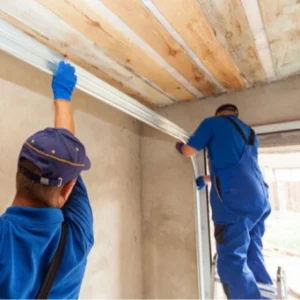A garage door opener is an essential component of any modern garage, providing convenience, security, and efficiency. However, when it malfunctions, it can be frustrating and inconvenient. Fortunately, many common fixing garage door opener issues can be resolved with basic troubleshooting and repairs. This guide will walk you through the process of diagnosing and fixing your garage door opener, ensuring smooth and reliable operation.
Common Garage Door Opener Problems
Before diving into repairs, it's essential to understand some common issues that garage door openers face:
- Garage Door Won’t Open or Close – The most common issue is the door not responding to the opener.
- Remote Control Not Working – The opener doesn’t respond to the remote control or wall switch.
- Garage Door Reverses Before Closing – The door starts closing but immediately goes back up.
- Unusual Noises – Grinding, squeaking, or rattling noises during operation.
- Opener Motor Runs, But Door Doesn’t Move – The motor operates, but the door remains stationary.
- Slow or Uneven Movement – The garage door opens or closes unevenly or moves sluggishly.
Troubleshooting and Fixing Your Garage Door Opener
1. Check the Power Source
One of the most overlooked issues is a lack of power. Ensure the opener is plugged in and that the circuit breaker hasn’t tripped. If the outlet is faulty, try plugging the opener into another power source.
2. Inspect and Replace Remote Batteries
If the remote control isn’t working, replace the batteries and ensure the antenna on the opener is hanging down properly. If the remote still doesn't work, try reprogramming it according to the manufacturer’s instructions.
3. Test the Wall Switch
If the remote control doesn’t work but the wall switch does, the issue may be with the remote or its signal transmission. If neither works, check for loose or damaged wiring in the wall switch and opener unit.
4. Adjust the Safety Sensors
Garage doors have safety sensors located near the bottom tracks. If the sensors are misaligned or obstructed, the door won’t close properly. To fix this:
- Check for any objects blocking the sensors.
- Clean the sensors with a soft cloth.
- Align the sensors so they face each other directly.
5. Inspect and Adjust the Limit Switches
If your garage door closes and then reopens immediately, the limit settings may be off. The limit switches tell the opener when to stop the door’s movement. Adjust these settings using a screwdriver, following the manufacturer’s guidelines.
6. Examine the Garage Door Tracks and Rollers
If the door moves unevenly or makes grinding noises:
- Check the tracks for debris or obstructions and clean them.
- Look for dents or misaligned tracks and adjust them carefully.
- Lubricate the rollers and hinges with a silicone-based lubricant.
7. Tighten Loose Hardware
Over time, the movement of the garage door can loosen screws and bolts. Inspect the door brackets, hinges, and opener mounting hardware, tightening any loose parts.
8. Inspect the Drive Chain or Belt
If the garage door opener motor runs but the door doesn’t move, the drive chain or belt might be broken or off track. Reattach or replace the chain/belt if necessary, and adjust its tension to ensure smooth operation.
9. Reset the Garage Door Opener
Sometimes, resetting the opener can resolve minor glitches. Unplug the unit, wait a few minutes, then plug it back in. If your opener has a reset button, follow the manufacturer’s instructions to perform a reset.
10. Replace the Logic Board or Motor
If none of the above steps work, the issue may lie within the opener’s internal components. The logic board or motor may need to be replaced, which might require professional assistance.
Preventive Maintenance Tips
Regular maintenance can prevent future issues and extend the lifespan of your garage door opener. Here are some tips:
- Lubricate Moving Parts – Apply lubricant to the tracks, rollers, hinges, and springs every six months.
- Check and Tighten Hardware – Regularly inspect and tighten all screws, bolts, and brackets.
- Test the Auto-Reverse Feature – Place a small object under the door and try closing it; it should reverse upon contact.
- Keep Sensors Clean and Aligned – Regularly clean and check the alignment of the safety sensors.
- Replace Batteries Periodically – Change the remote batteries annually to prevent sudden failures.
When to Call a Professional
While many garage door opener issues can be fixed with DIY troubleshooting, some problems require professional intervention:
- Broken Springs – Garage door springs are under high tension and can be dangerous to replace.
- Motor Failure – If the motor is burnt out, it may need expert repair or replacement.
- Complex Wiring Issues – Electrical problems should be handled by a professional to avoid hazards.
- Track Replacement – Severely damaged tracks should be replaced by a trained technician.
Conclusion
Fixing a garage door opener can often be accomplished with basic troubleshooting and maintenance. By identifying common issues and following the step-by-step repair methods outlined in this guide, you can restore your garage door opener’s functionality and avoid costly professional repairs. However, for complex issues involving electrical components or springs, it’s best to seek professional assistance. Regular maintenance will also help keep your garage door opener running smoothly for years to come.





Comments